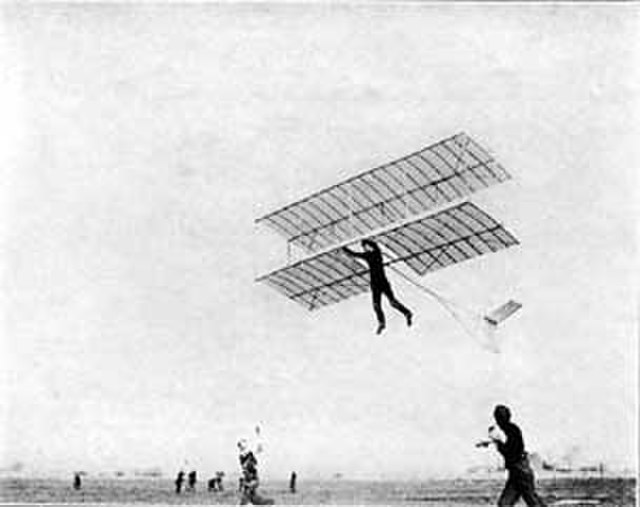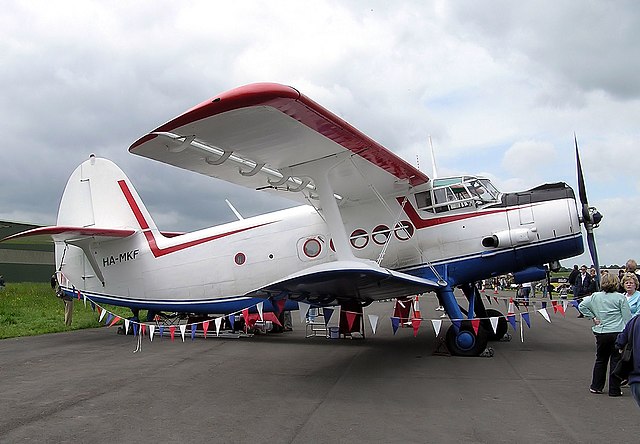The Fairey Swordfish is a biplane torpedo bomber, designed by the Fairey Aviation Company. Originating in the early 1930s, the Swordfish, nicknamed "Stringbag", was principally operated by the Fleet Air Arm of the Royal Navy. It was also used by the Royal Air Force (RAF), as well as several overseas operators, including the Royal Canadian Air Force (RCAF) and the Royal Netherlands Navy. It was initially operated primarily as a fleet attack aircraft. During its later years, the Swordfish was increasingly used as an anti-submarine and training platform. The type was in frontline service throughout the Second World War.
Fairey Swordfish
Workers carrying out salvage and repair work on a wing of a Swordfish
A Swordfish I during a training flight from RNAS Crail, circa 1939–1945
A formation of three Swordfish IIIs of No. 119 Squadron RAF over the North Sea, 1939–1945
A biplane is a fixed-wing aircraft with two main wings stacked one above the other. The first powered, controlled aeroplane to fly, the Wright Flyer, used a biplane wing arrangement, as did many aircraft in the early years of aviation. While a biplane wing structure has a structural advantage over a monoplane, it produces more drag than a monoplane wing. Improved structural techniques, better materials and higher speeds made the biplane configuration obsolete for most purposes by the late 1930s.
First World War Sopwith Camel biplane
1920s biplane hang glider
The Gloster Gladiator, a World War II fighter biplane
Soviet Antonov An-2 biplane from the 1940s








